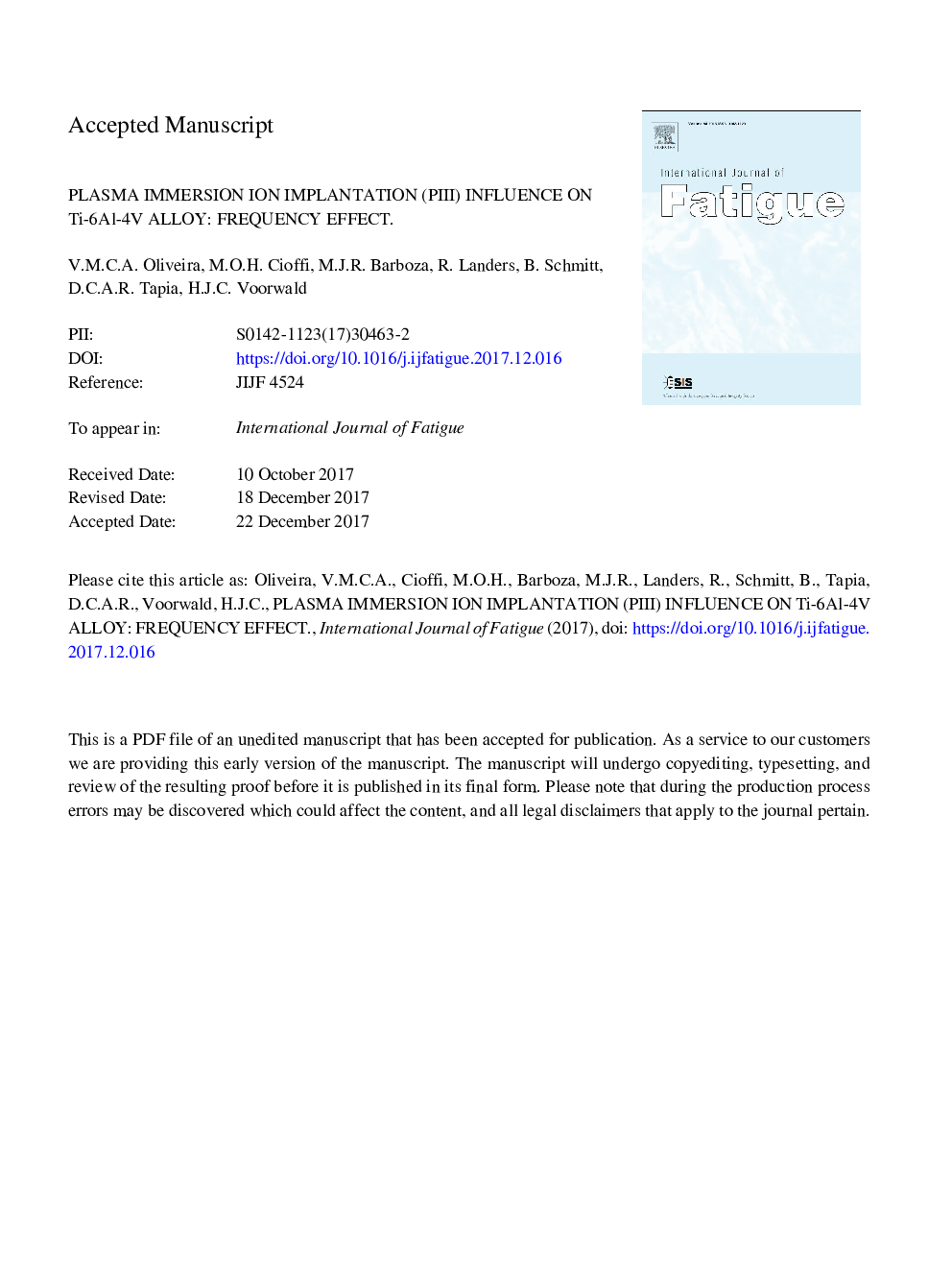| Article ID | Journal | Published Year | Pages | File Type |
|---|---|---|---|---|
| 7171594 | International Journal of Fatigue | 2018 | 35 Pages |
Abstract
The plasma immersion ion implantation treatment (PIII) acts to increase mechanical resistance with solid solution formation, new phases and defects inclusion, besides chemical and residual stress profile modification. Ti-6Al-4V alloy presents poor tribological properties and high affinity with interstitial elements, such as nitrogen and oxygen, this makes it more reactive at high temperatures. This paper aims to study Ti-6Al-4V alloy fatigue behavior subjected to nitrogen addition by plasma immersion ion implantation. It was investigated the frequency parameter influence on fatigue resistance. Ti-6Al-4V alloy was PIII treated with voltage equal to 9.5â¯kV, frequencies varying between 1000 and 1500â¯Hz and submitted to axial fatigue tests. Axial fatigue tests were performed, at room temperature and Râ¯=â¯0.1. Ti-6Al-4V alloy fatigue results were supported by Weibull statistics analysis. Ti-6Al-4V alloy microstructural analysis showed equiaxed α + β grains. Weibull analysis at untreated condition presented m values greater than 1, indicating reliability and uniformity. For a lifetime of 107 cycles, fatigue resistance was equal to 829â¯MPa for untreated condition, 644, 767 and 417â¯MPa, for fâ¯=â¯1000, 1200 and 1500â¯Hz, respectively. The nitrogen-based compounds were detected only at the condition where fâ¯=â¯1200â¯Hz. Thus, the combination of PIII treatment parameters, when fâ¯=â¯1200â¯Hz, hindered crack nucleation and increasing fatigue resistance of treated Ti-6Al-4V alloy when compared with the other two treatment conditions.
Related Topics
Physical Sciences and Engineering
Engineering
Mechanical Engineering
Authors
V.M.C.A. Oliveira, M.O.H. Cioffi, M.J.R. Barboza, R. Landers, B. Schmitt, D.C.A.R. Tapia, H.J.C. Voorwald,
